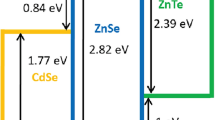Abstract
A DC-pulsed glow discharge (GD) has distinct temporal regimes which are characterized by “softer” or “harder” ionization of analytes introduced into the discharge. It is thus possible to obtain both molecular weight and structural fragment information from the same spectra. In order to extend the capabilities of this technique a laser ablation (LA) sampling system was coupled to a DC-pulsed GD and to a time-of-flight (TOF) mass spectrometer (MS) for characterizing organic samples such as oleic acid, reserpine, two different peptides, and a polymer. Both hard and soft ionization regimes were studied. These LAGD-TOFMS results were compared to matrix-assisted laser desorption ionization (MALDI) spectra using the same compounds (i.e., analytes, concentration, and matrix). It was found that LAGD offers tunable ionization and provides a reduced matrix dependence. However, the sensitivity achieved by the prototype LAGD-TOFMS was significantly lower when compared with commercially available MALDI-TOFMS instrumentation. Since LAGD-TOFMS is rather new, some technical details to increase its sensitivity are discussed.

Schematics of molecular and structural information of oleic acid molecule during the different temporal regimes of a pulsed GD.











Similar content being viewed by others
References
Krull IS (1991) Trace metal analysis and speciation. Elsevier, New York
Sanz-Medel A (1998) Spectrochim Acta B 53:197–211
Ng JC, Johnson D, Imray P, Chiswell B, Moore MR (1998) Analyst 23:929–933
Gordon BM, Jones KW (1991) In: Subramanian KS, Iyengar GV, Okamoto K (eds) Biological trace element research, ACS Symposium Serie, Vol. 445, American Chemical Society, Washington, DC
Caruso JA, Wuilloud RG, Altamirano JC, Harris WR (2006) J Toxicol Environ Health 9:41–61
Waddell R, Lewis C, Hang W, Hassell C, Majidi V (2005) Appl Spectrosc 40:33–69
Cristoni S, Bernardi LR (2004) Expert Rev Proteomics 1:469–483
Siuzdak G (1994) Proc Natl Acad Sci USA 91:11290–11297
Ray SJ, Andrade F, Gamez G, McClenathan D, Rogers D, Schilling G, Wetzel W, Hieftje GM (2004) J Chromatogr A 1050:3–34
Sola-Vazquez A, Costa-Fernandez JM, Pereiro M, Sanz-Medel A (2011) Analyst 136:246–256
Jakubowski N, Dorka R, Steers E, Tempez A (2007) J Anal Atom Spectrom 22:722–735
Martin A, Pereiro R, Bordel N, Sanz-Medel A (2007) J Anal Atom Spectrom 22:1179–1183
Jackson GP, Lewis CL, Doorn SK, Majidi V, King FL (2001) Spectrochim Acta B 56:2449–2464
Yang CL, Ingeneri K, Harrison WW (1999) J Anal Atom Spectrom 14:693–698
Pan CK, King FL (1993) J Am Soc Mass Spectrom 4:727–732
Majidi V, Moser M, Lewis C, Hang W, King FL (2000) J Anal Atom Spectrom 15:19–25
Steiner RE, Lewis CL, Majidi V (1999) J Anal Atom Spectrom 14:1537–1541
Lewis CL, Moser M, Dale DE, Hang W, Hassell C, King FL, Majidi V (2003) Anal Chem 75:1983–1996
Fliegel D, Fuhrer K, Gonin M, Günther D (2006) Anal Bioanal Chem 386:169–179
Tarik M, Günther D (2010) J Anal Atom Spectrom 25:1416–1423
Robertson-Honecker JN, Zhang N, Pavkovichab A, King FL (2008) J Anal Atom Spectrom 23:1508–1517
Zhang N, King FL (2009) J Anal Atom Spectrom 24:1489–1497
Belkin M, Olson LK, Caruso JA (1997) J Anal Atom Spectrom 12:1255–1261
Gibeau TE, Marcus RK (2000) Anal Chem 72:3833–3840
Dreisewerd K (2003) Chem. Rev 103:395–425
Knochenmuss R (2006) Analyst 131:966–986
Tarik M, Lotito G, Whitby JA, Koch J, Fuhrer K, Gonin M, Michler J, Bolli JL, Günther D (2009) Spectrochim Acta B 64:262–270
Hidaka H, Hanyu N, Sugano M, Kawasaki K, Yamauchi K, Katsuyama T (2007) Ann Clin Lab Sci 37:213–221
Kinumi T, Saisu T, Takayama M, Niwa H (2000) J Mass Spectrom 35:417–422
Shroff R, Svatos A (2009) Rapid Commun Mass Spectrom 23:2380–2382
Schaiberger AM, Moss JA (2008) J Am Soc Mass Spectrom 19:614–619
Schiller J, Süss R, Fuchs B, Müller M, Petkovic M, Zschörnig O, Waschipky H (2007) Eur Biophys J 36:517–527
NIST Chemistry WebBook. Available at http://webbook.nist.gov/chemistry/ Accessed 19 July 2011
Ratliff P, Harrison WW (1995) Appl Spectrosc 49:863–871
Ratliff P, Harrison WW (1994) Spectrochim Acta B 49:1747–1757
McCombie G, Knochenmuss R (2004) Anal Chem 76:4990–4997
Gusev A, Wilkinson W, Proctor A, Hercules D (1995) Anal Chem 67:1034–1041
Vorm O, Roepstorff P, Mann M (1994) Anal Chem 66:3281–3287
Cohen S, Chait B (1996) Anal Chem 68:31–37
Gogichaeva NV, Williams T, Alterman MA (2007) J Am Soc Mass Spectrom 18:279–284
Acknowledgments
The authors would like to thank the European Community for financial support through GLADNET, a Marie Curie-RTN within the FP 6, and TOFWERK AG for providing the TOF instrument. The authors also would like to thank Dr. R. Knochenmuss for the discussion of the results, and L. Bertschi (MS service, D-CHAB) for the MALDI measurements. We also like to thank H. Longerich and two anonymous reviewers for critical and constructive comments which helped to improve the manuscript.
Author information
Authors and Affiliations
Corresponding author
Additional information
Published in the special issue Analytical Sciences in Switzerland with guest editors P. Dittrich, D. Günther, G. Hopfgartner, and R. Zenobi.
Appendix A
Appendix A
A.1 Chemical structures of the compounds
Here below (Fig. 12) are the chemical structures of the organic molecules used in this study. These structure’s formulas were produced using Symyx Draw 4.0.
A.2 MALDI spectrum of CHCA and oleic acid
A mass spectrum measured with MALDI concerning CHCA alone and mixed with oleic acid is in Fig. 13.
Rights and permissions
About this article
Cite this article
Lotito, G., Günther, D. Tunable fragmentation of organic molecules in laser ablation glow discharge time-of-flight mass spectrometry. Anal Bioanal Chem 402, 2565–2576 (2012). https://doi.org/10.1007/s00216-011-5498-x
Received:
Revised:
Accepted:
Published:
Issue Date:
DOI: https://doi.org/10.1007/s00216-011-5498-x





